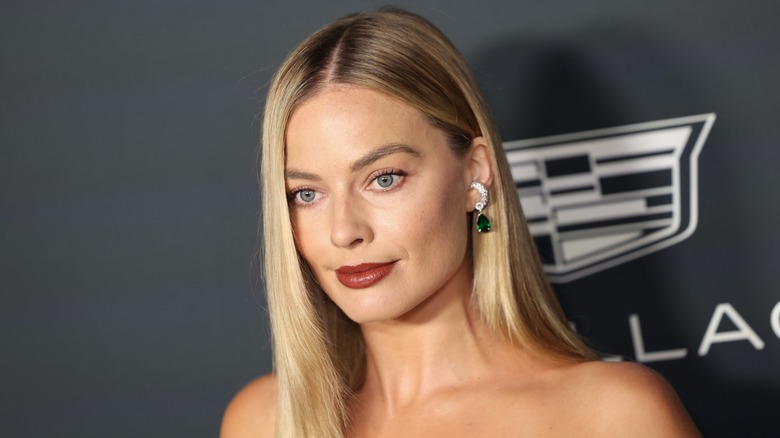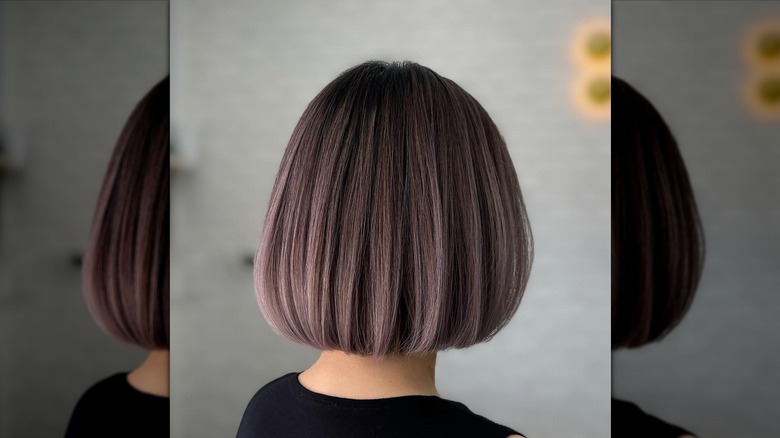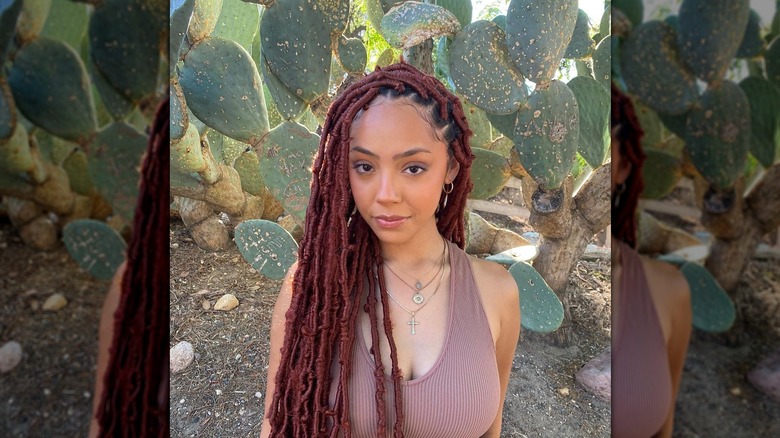What Are Shadow Roots & How Can They Benefit Your Hair Looks?
If you've been inside the world of beauty social media and spent hours scouring the likes of TikTok for the latest hair trends (consider us guilty), you'll probably have heard about the hair trend that is shadow roots. The technique first rose to prominence in 2021 (when many of us struggled to get to the salon due to the global pandemic) but it hasn't let its chokehold on us go since.
For those unfamiliar with the technique, shadow roots are exactly as they sound. The process involves intentionally leaving the roots of the hair a little darker to essentially create what looks like a shadow at the top of the head (similar to the one that can sometimes occur naturally in certain lighting). "It's a popular trend that can be achieved by blending a darker shade at the roots with a lighter shade towards the ends, creating a seamless transition," Abby Haliti, colorist and founder of Abby Haliti Color Studio, explained to InStyle.
But for so long we've been taught that hair roots aren't exactly something to aim for. So why are so many people now actually intentionally putting roots into their locks? It turns out the technique can have a number of big hair benefits.
Shadow roots can have some big hair benefits
Anyone who's ever dyed their hair will know that one of the biggest downsides is all the maintenance. To avoid obvious root regrowth, many people have to head back to the salon around every six to eight weeks to get root touch-ups. But, of course, if you're intentionally letting your roots grow in, you won't need to have appointments so regularly. "Since the roots are intentionally left darker, the contrast between regrowth and the colored hair is minimal, allowing you to go longer between touch-up appointments," colorist Richy Kandasamy explained to InStyle. Busy, on-the-go people who don't have time to keep touching up their roots every six to eight weeks will really benefit from the technique, as well as those who like their looks to have a more casual, lived-in look.
But that's not all shadow roots can do for your tresses. Shadow roots can also improve the appearance of your hair, as Abby Haliti explained, "[It] adds depth and dimension to the overall hair color." Olivia Casanova, hairstylist and co-owner of IGK Salon, noted that adding shadow roots can also soften the look of the hair to create a less severe effect, making it ideal for those who don't want a color that's so dramatic. And, as master colorist Nina Rubel put it to Cosmopolitan, "You get a delicate contrast by using a slightly deeper shade at the roots."
And shadow roots can work for pretty much anyone with any hair texture
Another reason you may want to give shadow roots a try? Because you can! According to Olivia Casanova, this technique isn't off limits for anyone (unless you have super short hair that's not long enough to create the shadow, of course). "Root shadowing works for every hair type, color, and texture," she told InStyle.
Hairstylist Lauren Grummel noted while speaking to Glamour that those who have lighter hair but don't want the maintenance that can often come with highlighted locks will also be great candidates to give this look a go. Especially to get that lived-in blonde look. "It's great for anyone with lighter highlights wanting an easier grow-out," she said. "Ask for a root color that is about a shade lighter than your natural. It will blend seamlessly with the highlights and your natural shade, creating a lower contrast, but you'll still have pops of the highlights."
But what makes it different to other hair techniques?
You're not far off for thinking shadow roots are the same as ombre or balayage hair, which also both usually involve having darker hair at the top of the head which then fades into a lighter color. But all three are different. The way shadow roots differ is because of exactly where the darker color is applied to the hair. As you'd probably expect from the name, shadow roots refer to a darker shade literally only at the roots. Balayage and ombre looks may be similar, but the darker color usually goes much further down the locks. "While all three techniques offer unique effects, shadow roots specifically focus on creating depth at the roots," Abby Haliti told InStyle. Some people may also get confused between the root shadow and root melt technique. The difference here? Root shadow is more subtle and is only on around the first inch of the hair. Root melt tends to go down further.
Equally, there are a couple of ways to create the shadow roots look that's right for you. Nina Rubel told Cosmopolitan that sometimes shadow roots are added after your hair's been highlighted in order to blend out harsh lines. But that's not the only way. "You can also utilize a shadow root during a single-process color by using a darker formula on the roots and a lighter formula through the mid-lengths and ends to add some dimension and movement," she said.


